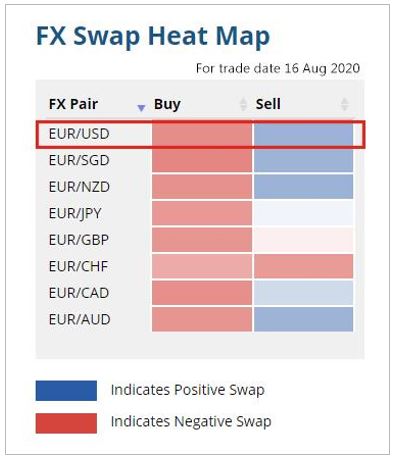
Which are the most popular currency pairs around the globe? Some of the most popular currencies are EUR/USD. USD/JPY. EUR/GBP. AUD/USD. GBP/USD. These are the most closely correlated and popular currency pairs. This article will briefly explain each pair as well as the differences. However, you should remember that the first two are the most popular, as they represent a major portion of global trade.
EUR/USD
Forex trading is a complex business. There are hundreds upon hundreds of currency pairs. Only a few are heavily traded. US dollars account for more than half of all Forex trades. EUR/USD is the most preferred currency pair in the world accounting for 30% of the multibillion-dollar Forex turnover. The US and European Union are the two largest economies, and this is one of the reasons that traders prefer this pair.
USD/JPY
USD/JPY has been a very popular trading pair. It has a low price ask spread and tons liquidity. Therefore, it is often considered to be a safe haven currency during periods of economic uncertainty. JPY can be affected and is therefore not immune from economic and political changes in Korea or China. Because of this, it is often referred to as the Gateway to the East.

EUR/GBP
The most popular and closely watched currency pair in the world is EUR/GBP. This currency pair is traded throughout the day. However, the London trading hour is the most important time for trading. London trade hours account for over 35% Forex transactions. This is why volatility is highest during these hours. All major European banks have their market activities in London, and they regularly exchange GBP for euros and dollars. The pair is often volatile, especially during the 08:00-17:00 time period.
AUD/USD
The Australian dollar has one of the most popular currency pairs around the globe. After the 2000 commodities boom in Australia, the popularity and value of the Aussie Dollar grew. This pair is a connection between two important and expanding economies. Individuals can speculate upon the difference between the currencies through a forex contract. These fluctuations can cause the AUD/USD currency exchange pair to move in unexpected directions. Here are the main factors that influence the AUD/USD pairing.
AUD/CHF
AUD/CHF - This currency pair connects Australia and Switzerland by using a common money. While it can be volatile like the AUD/USD, experienced traders can make substantial profits. With a daily range of 70-100 points, AUD/CHF trading is not for the faint-hearted. The country is famous for its resource-rich and largely commodity-oriented economies.
GBP/USD
The pound, one of the most popular currency pairs worldwide, is highly traded. The US Dollar is the most well-known reserve currency. The pound is third, just behind the euro (and the Japanese Yon). Both currencies are closely related, so monetary policy is an important factor in determining the exchange rates. The currency pair's value is largely influenced by monetary policy, as the central banks of both countries review interest rates several times a year.

AUD/JPY
The currency pair AUD/JPY between Australia and Japan is the AUD/JPY. This combination of two of the developed world's largest economies is often regarded as a carry trade currency, which means that traders use it primarily as a hedge against the risks of trading volatile currency pairs. It also follows several technical patterns, including support and resistance, Fibonacci levels, pivots, and trendlines.
FAQ
Are bonds tradeable?
Yes they are. You can trade bonds on exchanges like shares. They have been traded on exchanges for many years.
The only difference is that you can not buy a bond directly at an issuer. You will need to go through a broker to purchase them.
This makes buying bonds easier because there are fewer intermediaries involved. This means that selling bonds is easier if someone is interested in buying them.
There are many different types of bonds. Some bonds pay interest at regular intervals and others do not.
Some pay quarterly, while others pay interest each year. These differences make it possible to compare bonds.
Bonds can be very helpful when you are looking to invest your money. For example, if you invest PS10,000 in a savings account, you would earn 0.75% interest per year. You would earn 12.5% per annum if you put the same amount into a 10-year government bond.
If all of these investments were put into a portfolio, the total return would be greater if the bond investment was used.
How are securities traded?
Stock market: Investors buy shares of companies to make money. To raise capital, companies issue shares and then sell them to investors. These shares are then sold to investors to make a profit on the company's assets.
Supply and demand determine the price stocks trade on open markets. The price goes up when there are fewer sellers than buyers. Prices fall when there are many buyers.
There are two methods to trade stocks.
-
Directly from the company
-
Through a broker
What is the difference in a broker and financial advisor?
Brokers are people who specialize in helping individuals and businesses buy and sell stocks and other forms of securities. They manage all paperwork.
Financial advisors are experts in the field of personal finances. They can help clients plan for retirement, prepare to handle emergencies, and set financial goals.
Banks, insurance companies or other institutions might employ financial advisors. They can also be independent, working as fee-only professionals.
You should take classes in marketing, finance, and accounting if you are interested in a career in financial services. You'll also need to know about the different types of investments available.
What is a REIT?
An entity called a real estate investment trust (REIT), is one that holds income-producing properties like apartment buildings, shopping centers and office buildings. These are publicly traded companies that pay dividends instead of corporate taxes to shareholders.
They are similar to a corporation, except that they only own property rather than manufacturing goods.
What is the main difference between the stock exchange and the securities marketplace?
The entire market for securities refers to all companies that are listed on an exchange that allows trading shares. This includes stocks, options, futures, and other financial instruments. Stock markets are generally divided into two main categories: primary market and secondary. Stock markets are divided into two categories: primary and secondary. Secondary stock markets let investors trade privately and are smaller than the NYSE (New York Stock Exchange). These include OTC Bulletin Board Over-the-Counter, Pink Sheets, Nasdaq SmalCap Market.
Stock markets are important for their ability to allow individuals to purchase and sell shares of businesses. The value of shares depends on their price. When a company goes public, it issues new shares to the general public. Dividends are received by investors who purchase newly issued shares. Dividends can be described as payments made by corporations to shareholders.
Stock markets not only provide a marketplace for buyers and sellers but also act as a tool to promote corporate governance. Boards of directors, elected by shareholders, oversee the management. Boards make sure managers follow ethical business practices. If a board fails in this function, the government might step in to replace the board.
What are the benefits to owning stocks
Stocks are more volatile than bonds. The stock market will suffer if a company goes bust.
If a company grows, the share price will go up.
In order to raise capital, companies usually issue new shares. This allows investors to buy more shares in the company.
Companies borrow money using debt finance. This gives them cheap credit and allows them grow faster.
People will purchase a product that is good if it's a quality product. The stock price rises as the demand for it increases.
Stock prices should rise as long as the company produces products people want.
What is a fund mutual?
Mutual funds are pools of money invested in securities. They provide diversification so that all types of investments are represented in the pool. This helps reduce risk.
Mutual funds are managed by professional managers who look after the fund's investment decisions. Some mutual funds allow investors to manage their portfolios.
Because they are less complicated and more risky, mutual funds are preferred to individual stocks.
Statistics
- Ratchet down that 10% if you don't yet have a healthy emergency fund and 10% to 15% of your income funneled into a retirement savings account. (nerdwallet.com)
- Our focus on Main Street investors reflects the fact that American households own $38 trillion worth of equities, more than 59 percent of the U.S. equity market either directly or indirectly through mutual funds, retirement accounts, and other investments. (sec.gov)
- "If all of your money's in one stock, you could potentially lose 50% of it overnight," Moore says. (nerdwallet.com)
- US resident who opens a new IBKR Pro individual or joint account receives a 0.25% rate reduction on margin loans. (nerdwallet.com)
External Links
How To
How to Invest in Stock Market Online
Investing in stocks is one way to make money in the stock market. There are many methods to invest in stocks. These include mutual funds or exchange-traded fund (ETFs), hedge money, and others. The best investment strategy depends on your investment goals, risk tolerance, personal investment style, overall market knowledge, and financial goals.
To be successful in the stock markets, you have to first understand how it works. This involves understanding the various types of investments, their risks, and the potential rewards. Once you know what you want out of your investment portfolio, then you can start looking at which type of investment would work best for you.
There are three main types: fixed income, equity, or alternatives. Equity refers a company's ownership shares. Fixed income is debt instruments like bonds or treasury bills. Alternatives include commodities, currencies and real estate. Venture capital is also available. Each option has its pros and cons so you can decide which one suits you best.
There are two main strategies that you can use once you have decided what type of investment you want. One strategy is "buy & hold". You purchase some of the security, but you don’t sell it until you die. Diversification is the second strategy. It involves purchasing securities from multiple classes. By buying 10% of Apple, Microsoft, or General Motors you could diversify into different industries. You can get more exposure to different sectors of the economy by buying multiple types of investments. You are able to shield yourself from losses in one sector by continuing to own an investment in another.
Risk management is another key aspect when selecting an investment. Risk management will allow you to manage volatility in the portfolio. A low-risk fund could be a good option if you are willing to accept a 1% chance. However, if a 5% risk is acceptable, you might choose a higher-risk option.
Learn how to manage money to be a successful investor. You need a plan to manage your money in the future. Your short-term, medium-term, and long-term goals should all be covered in a good plan. That plan must be followed! Do not let market fluctuations distract you. Stick to your plan and watch your wealth grow.